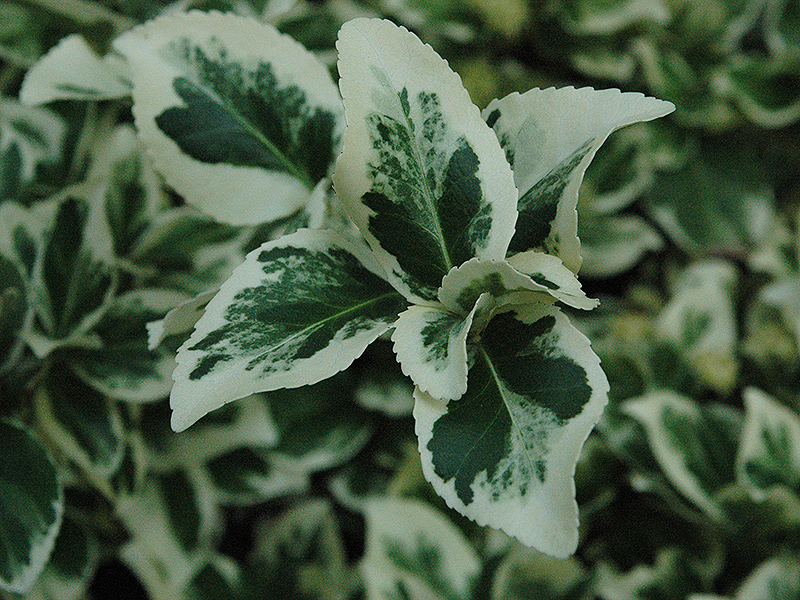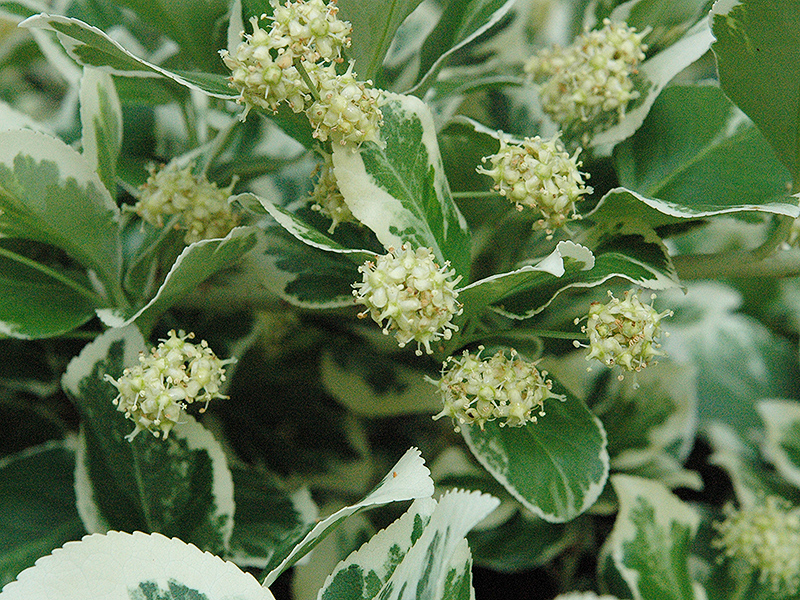
Woody > Euonymus > Euonymus fortunei > Euonymus fortunei 'Emerald Gaiety'
Euonymus fortunei
'Emerald Gaiety'
Emerald Gaiety Euonymus
| Family |
| Celastraceae |
| Genus |
| Euonymus |
| Species |
| fortunei |
| Cultivar |
| 'Emerald Gaiety' |
| Category |
| Woody |
| Type |
| Shrub (evergreen) |
| Pronunciation |
| USDA Hardiness Zone |
| 5 - 8 |
| Canadian Hardiness Zone |
| 5 |
| RHS Hardiness Zone |
| H5 (observed growing well in H7) |
| Temperature (°C) |
| -15 to -10 |
| Temperature (°F) |
| 5 to 14 |
| Height |
| 1.25 m |
| Spread |
| 1.25 m |
Photographs
Description and Growing Information
Flowering Period
| General Description |
| This very compact, mounding shrub has broad leaves with a green interior, and a creamy white margin. Stems can root if touching the ground, allowing this plant to spread into a groundcover. |
| Cultivation |
| This cultivar grows best in full sun to partial shade. It has the ability to withstand many different types of soils as well as moisture levels. |
| Shape |
| Climbing; mounding; massing, with vertical branches. Very bushy and dense formed plant. |
| Growth |
| Medium |
| ID Characteristic |
| This cultivar is a broadleaf evergreen, allowing it to be easily identified in winter time. The leaves have a creamy-white margin with a green interior. Leaves take on a purple tinge in winter. |
| Pests |
| Euonymus scale, which is a very devastating insect pest, others include anthracnose, crown gall, and aphids. Rabbits, mice voles and deer may also beef concern. |
| Habitat |
| Horticultural origin. |
| Bark/Stem Description |
| Young stems are a greenish colour and vine like, whereas mature stems possess a woody texture, but remain smooth. Stems will root if they come in contact with soil. |
| Flower/Leaf Bud Description |
| Buds on this plant are very small and inconspicuous. They emerge creamy white in colour and only exist for a few days before opening into a small leaf. Buds are 0.5 cm in length. |
| Leaf Description |
| Leaves are serrate with an opposite arrangement. They have pronounced white margins, with a light to dark green interior, and often show tinges of pink in autumn and winter. Underside of leaf is green.Leaves 3 cm wide and 5 cm long. |
| Flower Description |
| Relatively inconspicuous; does produce a cyme inflorescence; flowers are creamy white, but not showy. Flowers in late spring to early summer but only for a short period of time; flowers approximately 2-3 mm in size. |
| Fruit Description |
| The fruit produced is an accessory tissue, in capsule form, which is not showy. Colour can vary, but usually is white to orange. Fruiting time is in late autumn; September to early November. Fruit is usually 1.5 cm in diameter. |
| Colour Description |
| Leaves are green with wide white margins. Young stems are green and vine like, whereas mature stems are woody. Pinkish tinge can be noticed in winter on leaves. Some leaves may completely fully green which is reversion. |
| Texture Description |
| Low mounding to somewhat vine like shrub. Can be trained to climb, with little effort. Producing a medium fine to medium texture in the landscape. |
| Notable Specimens |
| The Botanical Gardens of Fanshawe College, London, Ontario, Canada. |
| Propagation |
| Usually propagated from stem cuttings in late summer, as stems will root fairly easily when contact with soil is made. |



